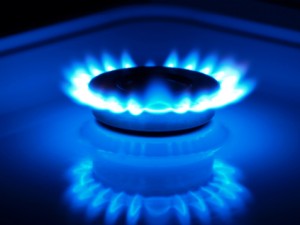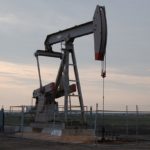 Natural rose to the highest in 2-1/2-years following EIA’s report that showed US inventories fell by an all-time record amount last week, beating analysts’ expectations. The energy source was also supported by long-term weather forecasting models, which predicted below-average temperatures in the high-use states, boosting demand for the power-station fuel.
Natural rose to the highest in 2-1/2-years following EIA’s report that showed US inventories fell by an all-time record amount last week, beating analysts’ expectations. The energy source was also supported by long-term weather forecasting models, which predicted below-average temperatures in the high-use states, boosting demand for the power-station fuel.
On the New York Mercantile Exchange, natural gas for delivery in January traded little changed at $4.459 per mBtu at 14:48 GMT, losing 0.06% for the day. Yesterday, prices marked the steepest daily advance since July 18th, surging by 4.33% to close at $4.460 per mBtu. Prices touched $4.491 per mBtu, the highest since July 21st 2011, while days low stood at $4.437 per million British thermal units. Natural gas has advanced 33% so far this year.
Gas advanced after the Energy Information Administration reported that US gas inventories fell by an all-time record-high 285 billion cubic feet in the week ended December 13, beating expectations for a 263 billion decline according to the median estimate of 26 analysts surveyed by Bloomberg. Previous record drop was recorded at 274 billion cubic feet in January 2008. Last week’s decline sharply exceeded the five-year average decrease of 133 billion cubic feet and last year’s 70 billion drop during the comparable week.
“It smashed the all-time record, it was certainly a bullish number reflective of very cold weather and likely some well freeze-offs that hurt production.” said Stephen Schork, president of Schork Group Inc., cited by Bloomberg.
Total gas held in U.S. underground storage hubs equaled 3.248 trillion cubic feet as of Friday December 13th. Stockpiles were 488 billion cubic feet, or 13.1%, less compared to the same week a year ago and 285 billion cubic, or 7.4% less than the 5-year average of 3.509 trillion cubic feet. The deficit versus the five-year average widened to 7.4% from 3.0% the previous week.
Stockpiles in the East Region received a net withdrawal of 132 billion cubic feet to 1 683 billion and were 11.0% less than the average. In the West Region, stockpiles fell by 54 billion cubic feet to 450 billion and were 6.4% less than the average. Meanwhile, inventories at the Producing Region fell by 99 billion cubic feet to 1 115 billion and were 2.0% below the five-year average.
The energy source was supported by long-term forecasts for chilly weather across the high-consumption states of the Midwest and Northeast. NatGasWeather.com forecast a nice warm-up for the eastern US over the next few days with many locations seeing highs in the 60s and 70s., significantly easing natural gas and heating demand after last weeks record draw. The latest blast of Canadian air has already pushed through the western US and is now infiltrating the southern Plains. The temperature drop will not be extreme, but will still lower temperatures, because of the warm-up prior to its arrival. The low pressure system over the Southwest will track into the central US Saturday morning, after which it will strengthen rapidly, leading to bands of heavy rains and strong storms over the south-central US, with some wintry precipitation further north into the cold air. Heavy precipitation and colder conditions will finally push into the Northeast late Sunday and into Monday. Much greater temperature anomalies and cold conditions are expected early next week through the Midwest, brought by the reinforcing shot of cold air. Once the cold air gets established over the Midwest and Northeast early next week, it will probably remain until New Year’s Eve, maintaining heating and natural gas demand above average, as high temperatures will likely struggle to get out of the 15s and 20s. Another Canadian blast has the potential to advance into the central and southeastern US around the 27th. The weather pattern reveals numerous wintry weather systems that may track through the US after Christmas.
NatGasWeather.com’s extended forecast for the week ending January 3rd called for chilly and wintry weather over the Midwest and Northeast and mild and drier conditions over the western US. The high-use states of the Midwest and Northeast will continue to draw above normal natural gas and energy under these conditions. It is likely the central and southeastern US will see at least several days of very cold temperatures as well as wintry precipitation, which will increase natural gas and heating demand.
According to AccuWeather.com, the low in Chicago on December 24th will be 12 degrees Fahrenheit, 9 degrees beneath normal. Readings in Detroit on December 24th will bottom at 14 degrees Fahrenheit, below the average of 23 degrees, while the low in New York will be 22 degrees Fahrenheit, or 8 degrees beneath average.
When cold weather is expected, natural gas surges as increased electricity demand to power air-conditioning calls for more supply of the fuel, which is used for a quarter of U.S. electricity generation. Above-average readings in the winter season have the opposite effect. Consumption usually picks up from November through March. According to the Energy Information Administration, power generation accounts for 32% of U.S. gas demand and 49% of U.S. households use the energy source for heating.





